Clyde Berryman, age 69, passed away of a heart attack on December 31st, 2023, surrounded by his loving wife Gulay and his daughter Ajda. Clyde was a man of many talents; an artist, author, anaylist, opera lover, art gallery mamager, and much more. The below article about his Grand Prix dioramas was published in April, 2019, followed by links to a few of his articles that appeared in VeloceToday. We will miss him greatly.
By Pete Vack
Photos by Clyde Berryman
Clyde Berryman began collecting die-cast model racing cars as a young boy in the early 1960s in Tripoli, Libya, where his father was working for a major oil company. His passion for motor racing dates back to this era, and hearing stories from longtime Italian residents of Libya talk about the glory days of the pre-WW II Tripoli Grand Prix held at the Mellaha circuit.
“There were still some structural remains from this legendary venue which had not yet been removed as they built Wheelus Air Base right on top of where the old track existed. The huge 10,000 seat grandstands and the pits opposite were still able to be seen at the time.” His interest in racing eventually led him to collect a huge selection of Grand Prix models, many of which served to compliment Clyde’s real passion…building dioramas of his favorite tracks. In our lead photo, a compressed ‘time-capsule’ grid of representative racing car models which raced at Mellaha during the 1930’s in 1:43 scale.
Grand Prix travels
Years later and out of Africa, a race-happy uncle took him to see a Formula Two race at Albi, France in 1969 and the next year, he went with his parents to the Dutch Grand Prix at Zandvoort, Holland. It was a race marred by tragedy as British driver Piers Courage was killed in a fiery crash not far from where they were sitting among the infield dunes.
It was a somber drive back home to Brussels after the race. “Zandvoort had certainly brought home the mortal dangers of F1 in that era. My father liked cars and motor racing but neither of my parents would have approved of me becoming a racing driver. 1970 was a tragic year – McLaren died testing a CAN AM car, there was a fiery cash at Jarama with fortunately no fatalities…and then Rindt was killed in practice at Monza and became the only posthumous F1 World Driving Champion in the sport’s history.”
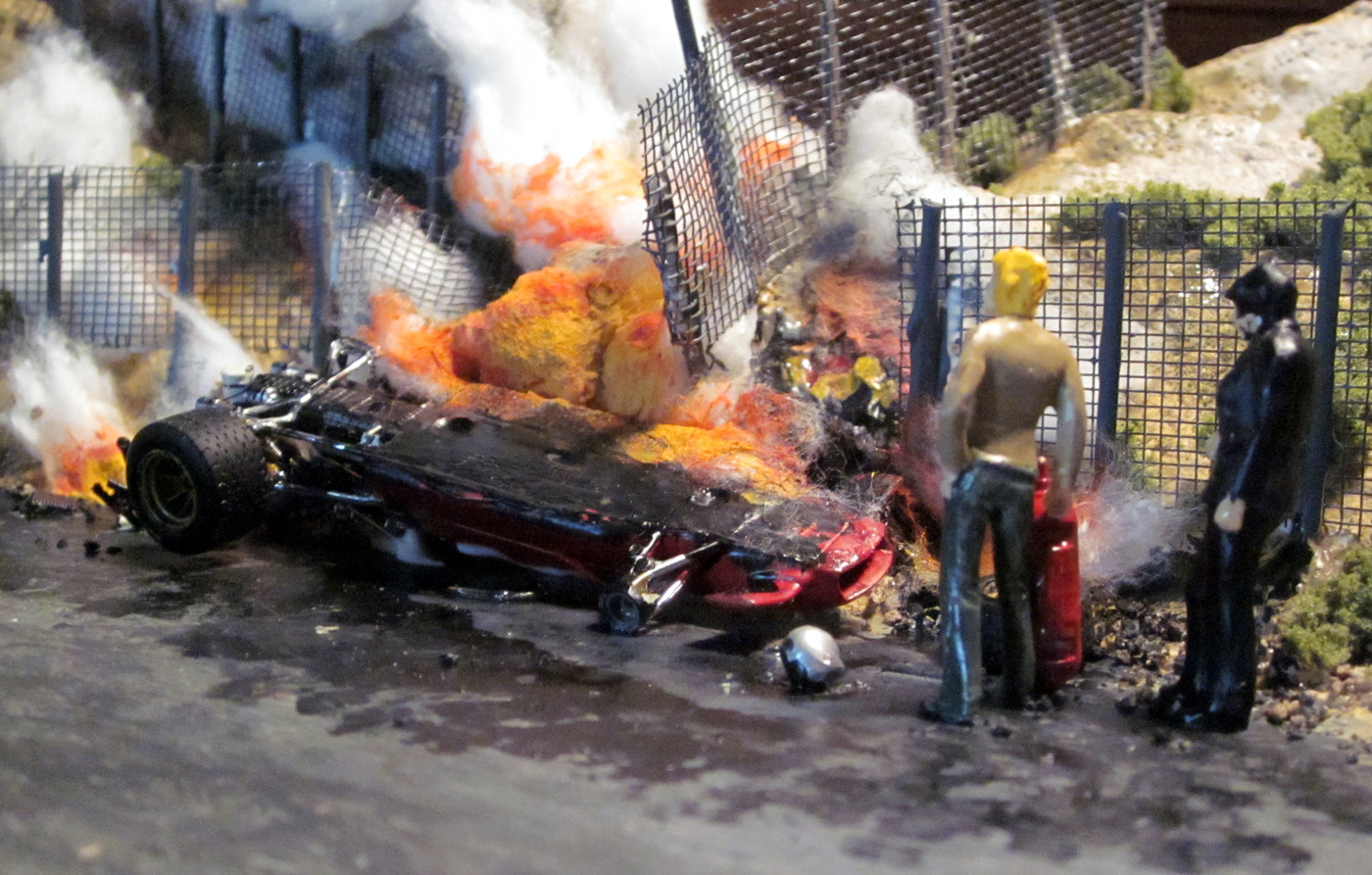
Piers Courage’s De-Tomaso-Ford 505 burns after his fatal accident at Zandvoort (1970 Dutch Grand Prix – 1/43 scale)
That tragic year didn’t put a damper on Berryman’s enthusiasm. Over the next four decades, Clyde was fortunate in being able to attend over twenty F1 Grand Prix races at Monaco, Monza, Brands Hatch, Montreal, Magny Cours, Paul Ricard, Jerez de la Frontera, Estoril, Imola, Indianapolis and Spa Francorchamps and the 24 Hours of Le Mans. He combined his passion for model collecting with writing and published two feature articles in F1 RACING magazine which carried his car and driver rankings in 1999-2000. “I was the lucky beneficiary of a paddock pass on several occasions and was able to indulge in freelance photography during F1 test sessions at the Catalunya circuit near Barcelona, Spain and at the U.S., Canadian, and Italian Grand Prix races in different years.” He interviewed the marketing manager of the Minardi F1 racing team during a factory visit to Faenza, Italy, covered the launch of the 2000 Ferrari F1 car at Maranello and dined at ‘Il Cavallino’ restaurant where the Old Man himself, Enzo Ferrari, took his meals for many years.
Clyde’s interest in vintage racing events and exploring “ghost” circuits has taken him to San Remo, Reims, Rouen les Essarts, Clermont Ferrand, Bordeaux, Dijon-Prenois, Montjuich, Modena, Montlhery, Watkins Glen, and many far more obscure locations. One such was the first Post WW II race in Paris; Berryman wrote a three part article for VeloceToday on the event. (Read Part 1)
Throughout this grand adventure, his artist-wife Gulay (www.gulayberryman.com) was a loyal fellow traveler on many race trips. “Gulay has experienced it all with good grace and few complaints, from the glamour of Monaco and party-town Montreal to the torrents of rain at Spa and the “tifosi” stampede at Monza!”
Models
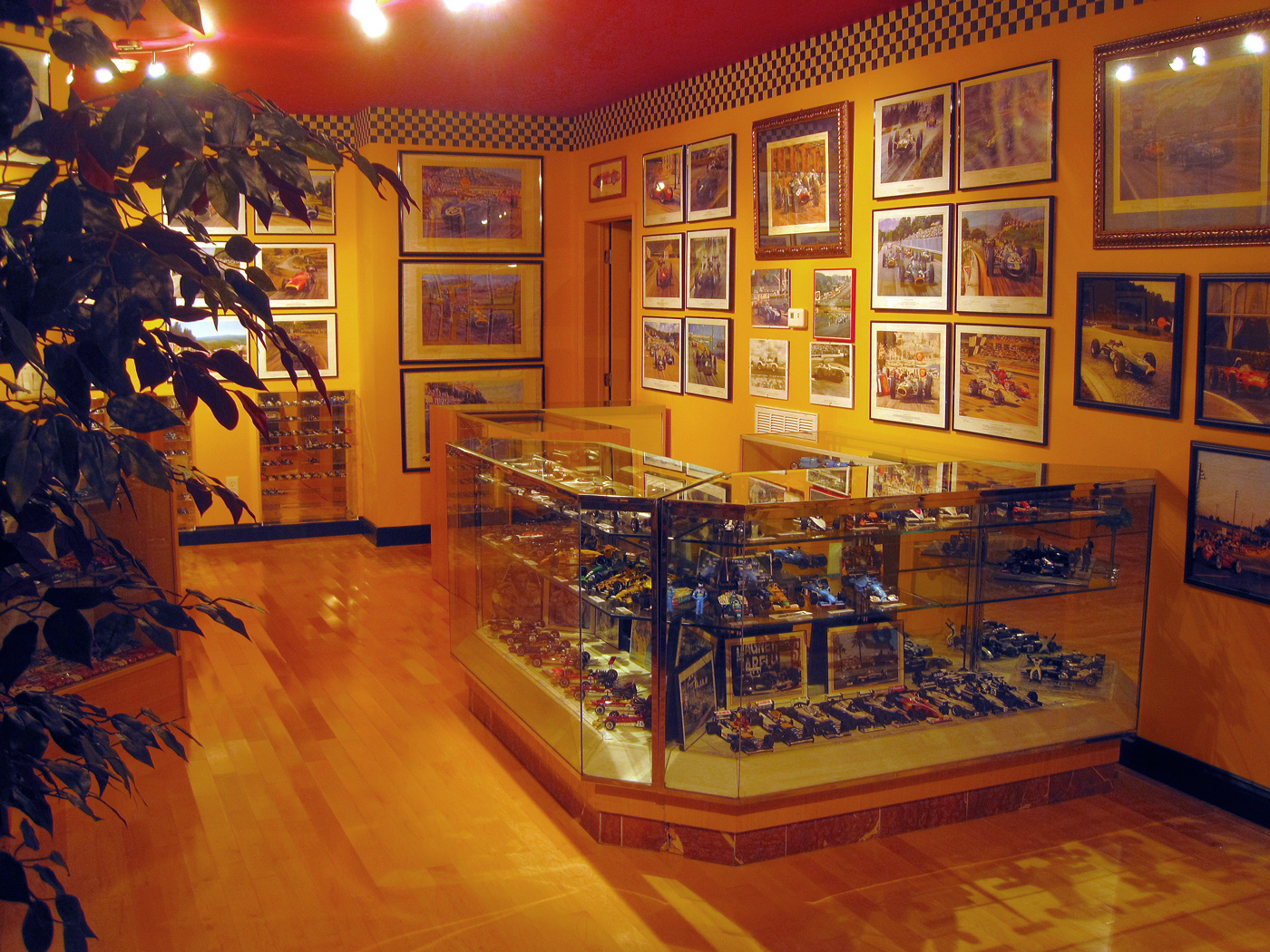
One end of the main basement room in Clyde’s home which has much of the motor racing car model collection and some dioramas.
Over a half-century, his racing and sports car model collection has grown to the circa 1,000 items it counts today. He displays models of all scales, but he says that “Most of the models are 1/43 scale die cast cars. 1/43 is the most popular international scale because it was used by many of the early die-cast manufacturers in the 1950-60’s such as Crescent, Dinky, Corgi, and Solido and also because at circa 4.5 inches in length, the cars do not take up too much space.”
Clyde’s main interest was always Grand Prix Formula One racing, as is reflected by the preponderance of this type of car in the model collection, but he subsequently expanded it to include a number of Sports, Prototype, GT, Can-Am, F.2, F.3, F-Ford, Nascar and Indy cars.
The Berryman Dioramas
About a dozen years ago after moving to Williamsburg, Virginia, Clyde became interested in building dioramas which tell the story behind a particular racing event. “I have always been a big history buff and I believe that the challenges posed by the historical situation of the moment, within which decisions must be made reveal the true level of merit by those who triumphed in such situations. That drew me to studying and analyzing accomplishments in both naval history and motor sport.”
The challenge here has been to select a diorama subject where it is possible to find all the car makes and models needed in the same scale and of then being able to adapt, modify, re-paint and re-number them to match the cars present in the actual race. Plenty of historic photo references of the event in question and good maps are essential in trying to accurately re-create the scene.
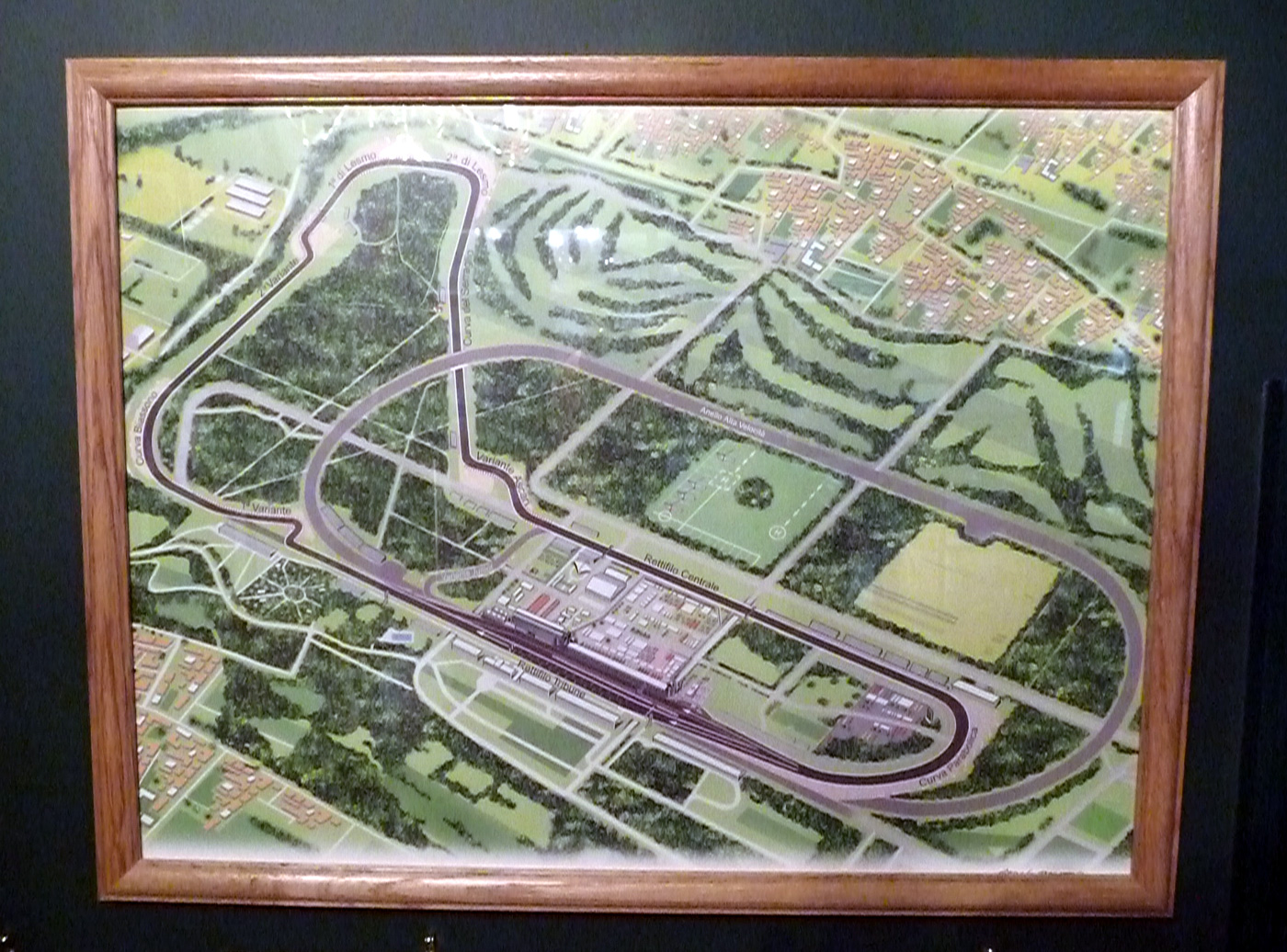
An excellent colored print (artist unknown) showing an aerial view of the layout of the Monza circuit which Clyde picked up in Italy.
“In trying to re-tell the story of what is happening, the modeler must also weigh the extent to which ‘artistic license’ can be used to better convey the atmosphere of a particular era without introducing elements which detract because they are historically out of context or inaccurate.”
Clyde’s dioramas often make use of the buildings and terrain accessories available to railroad modelers who work in either O-Scale (1/48) or N-Scale (1/160) as these are fairly close to the existing scale of the car models he is able to find.
“There is no hard and fast rule as to what materials you can use in making a diorama: plastic model building kits (modified as required), artificial trees, shrubbery, ground cover, individual or group figurines, foam board, wood, balsa, poster board, cardstock, pins, nails, plastic strips, glue (of all kinds), artificial surfaces, sandpaper, small pebbles or gravel, wire, paper, and Hydrocal plaster are common objects or materials that are used.”
It can take anywhere from just a few weeks to almost a year to build a diorama depending on its size, complexity and the ease or difficulty in doing research or obtaining the required materials. Once it is completed, it is a good idea to photograph it from a variety of angles and views before placing it under a clear glass or Plexiglas cover to protect it from dust, the mortal enemy of all models and dioramas.
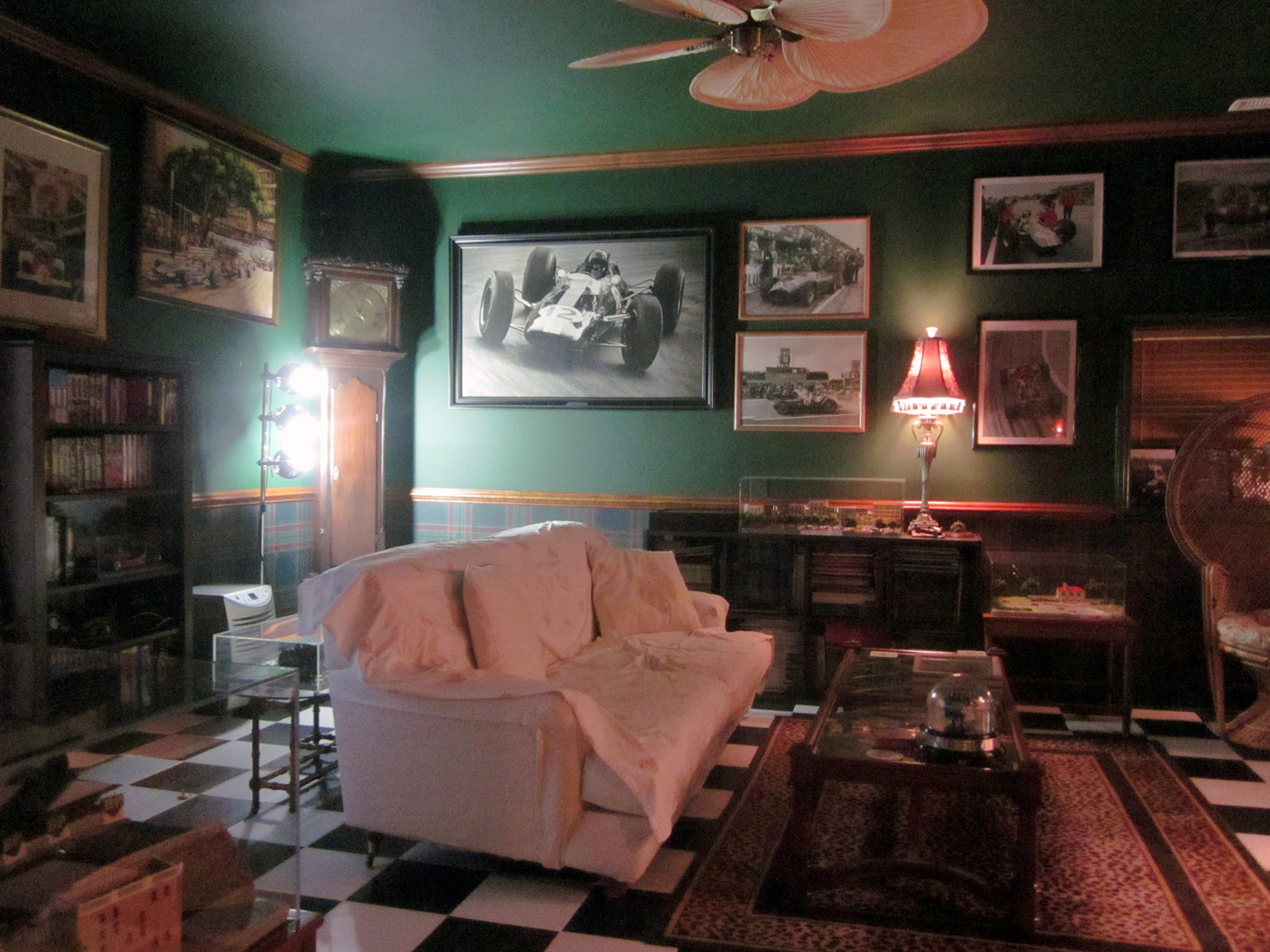
The downstairs den in Clyde’s home contains race dioramas, model racing cars, motor-racing related art and…checkerboard-pattern floor tiles!
The collection for now remains a private collection housed in the circa 2,500 square foot climate-controlled basement of Clyde and Gulay’s Williamsburg home. Clyde has gladly given informal tours of this collection (along with an adjoining ship model and naval diorama collection) to friends and enthusiasts and they have hosted group events for local opera, classical music, automotive or historical groups which include a visit to the basement!
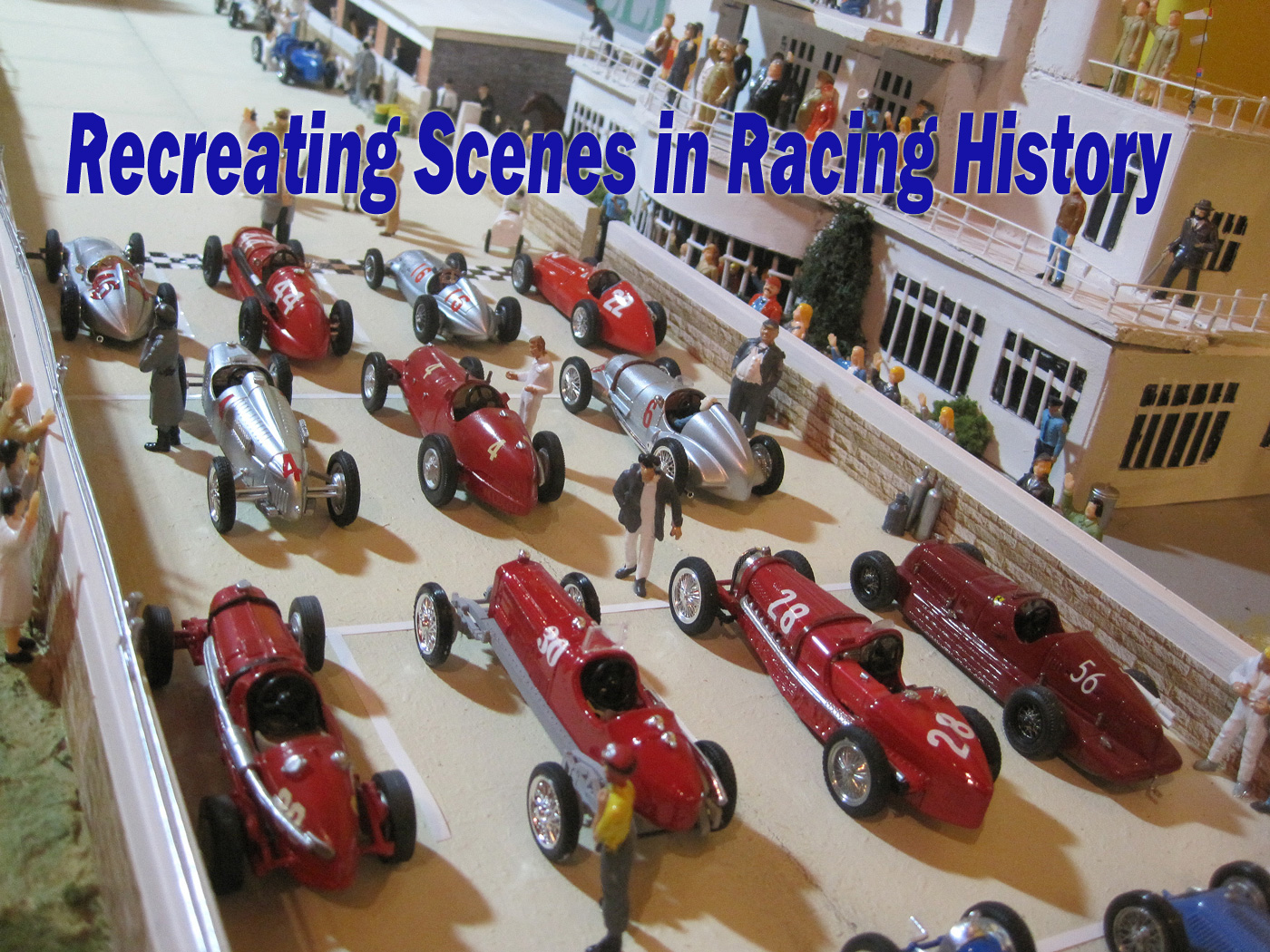
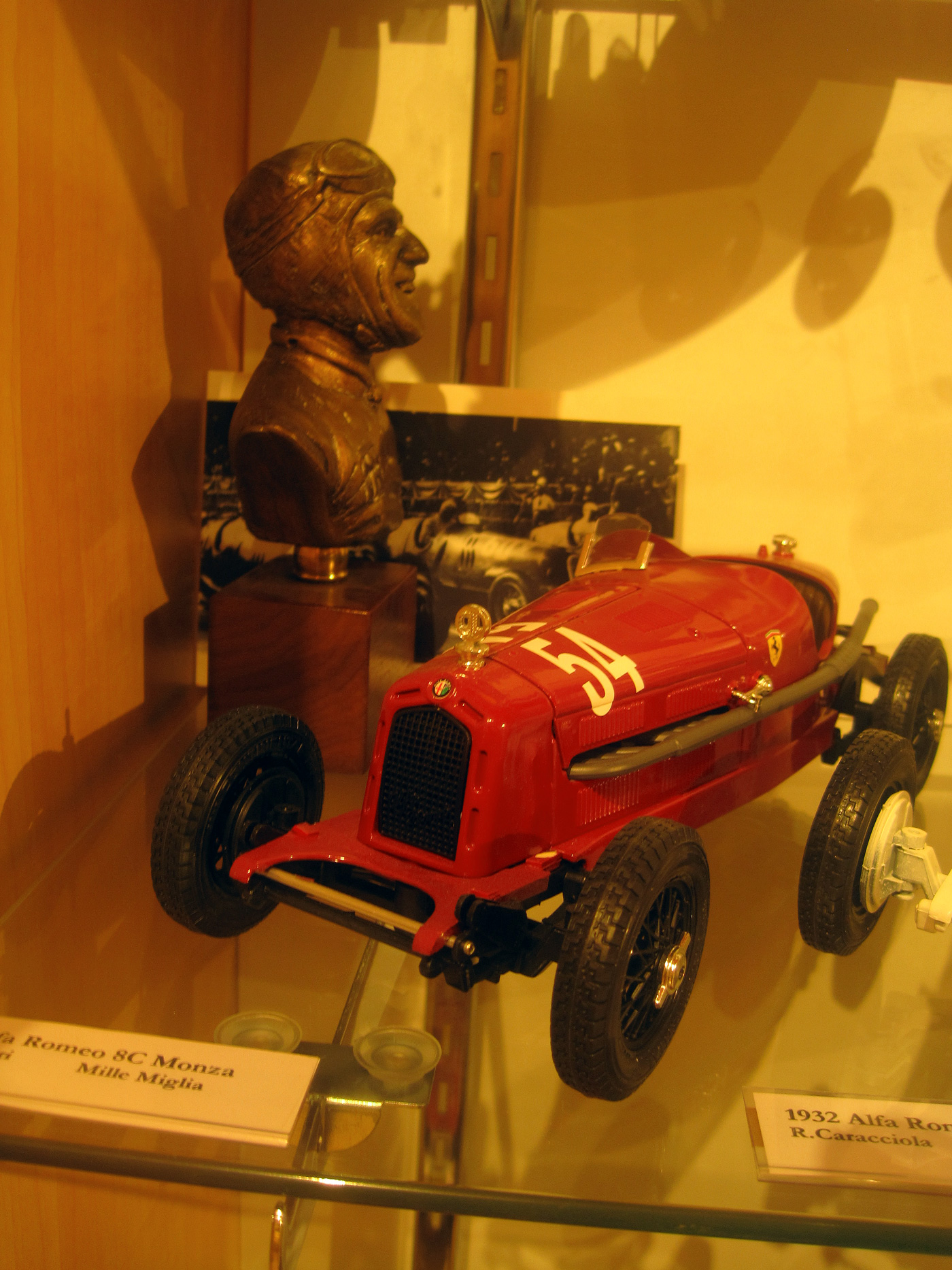
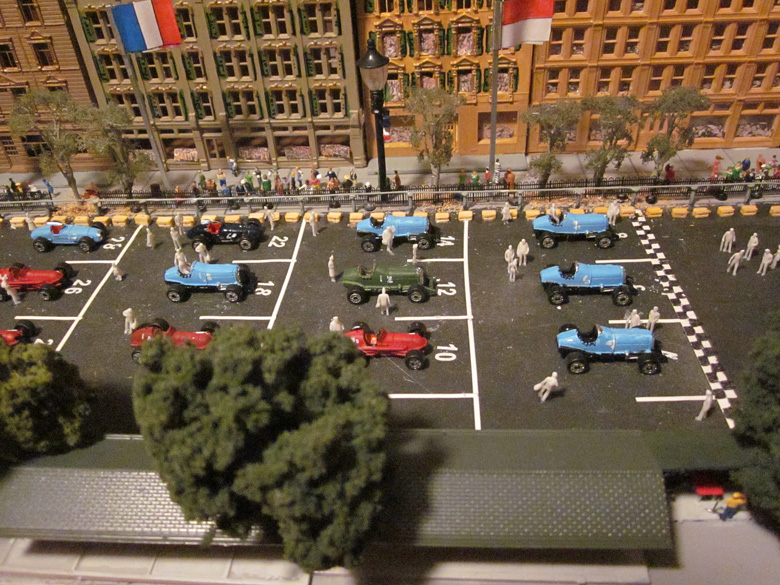
Very sad to hear of Clyde’s passing. His work has often been this inspiration for some of my own dioramas. My condolences to his family.